Many would say underrated and Sintra couldn’t be used in the same phrase. Sintra’s a well-known fairy-tale location, with colourful palaces, castles and lush forests. A trip to Sintra is part of the typical itinerary of many of those staying in Lisbon and its surroundings. However, there are still some sites and monuments that are overlooked, that’s the case of the Park and Palace of Monserrate, formally known as the Palácio de Monserrate.
Located slightly further away from the historical centre of Sintra, Monserrate gets much less attention than the much bigger Pena Palace, and the eye-catching Quinta da Regaleira. Monserrate might not have been the home of a Portuguese king, but it never fails to impress its visitors. Blending Gothic, Indian, and Moorish influences, it is one of the finest exemplars of Romanticism inspired Portuguese architecture.

A Brief History of Monserrate Palace
The history of Monserrate Park and Palace can be traced back to the 16th century, with the construction of a hermitage dedicated to Our Lady of Monserrate by order of Friar Gaspar on the site. Almost 250 years later, British trader Gerard of Visme rents Monserrate and orders the construction of a Gothic inspired castle that would later be transformed into the Palace of Monserrate as we know today.
A Storied History
Before that, Monserrate had another notable tenant, the British novelist William Beckford 1794, who signed a 13 year long lease, but only lived in the property for a third of it. As a result, Monserrate was left to decay until it was purchased by Francis Cook in 1863. Before that, the estate had another remarkable visitor, the romanticist poet Lord Byron who visited Sintra during his European tour. The imprints of Monserrate and Sintra on Lord Byron can be seen in his poem “Childe Harold’s Pilgrimage”.
The estate was then purchased in 1863 by Francis Cook who assigned the construction of the palace to English architect James Knowles. The palace served as the summer home of Cook family, and Francis Cook adopted the title of Viscount of Monserrate.
Almost a century later, the Palace was acquired by the Portuguese government, and Park and Palace of Monserrate are designated Property of Public Interest. Being part of the cultural landscape of Sintra, the Park and Palace of Monserrate is considered a UNESCO World Heritage Site since 1995.
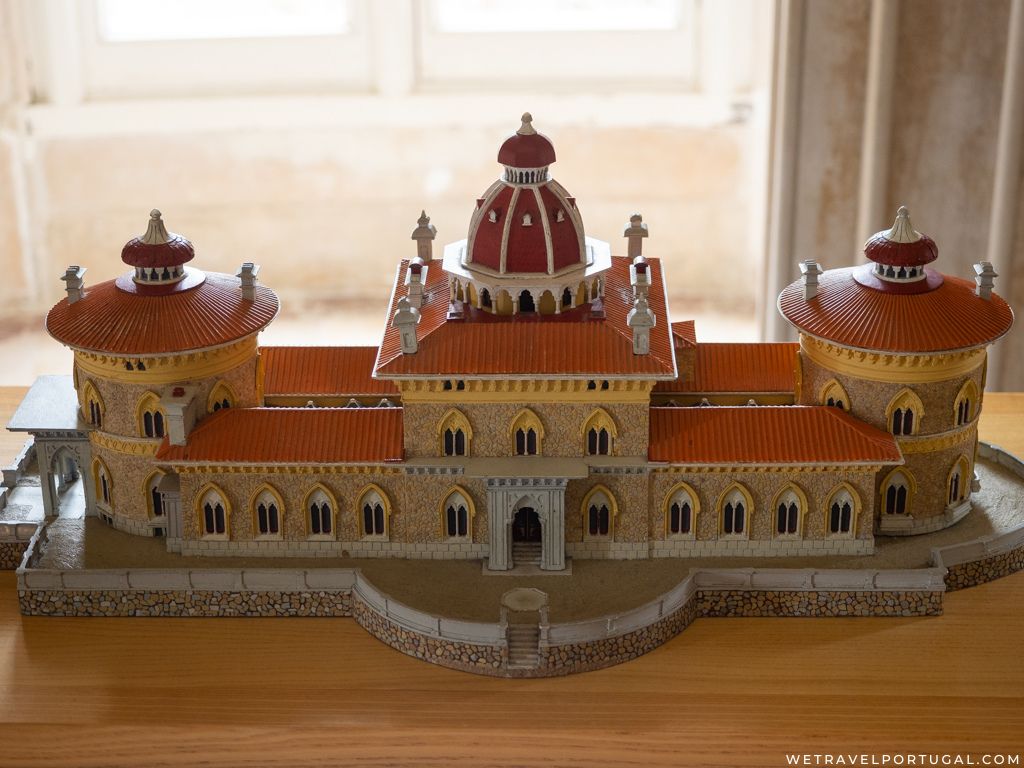
How to Get to Sintra from Lisbon
The simplest and most cost efficient way to get to Sintra from Lisbon is by train. The Sintra line is operated by Comboios de Portugal (CP) and it departs from Lisbon’s major train stations every 30 minutes.
With one-way tickets costing €2.40 and return tickets €4.80. We recommend acquiring the navegante card that you can top up in advance and use as you go. The card is valid for all Lisbon public transport and it’s a good way to avoid long lines to buy tickets at the day of the trip. It can be topped up at any metro or train station. Just remember to ‘touch’ your card before your journey. Sintra has two train stations: Portela de Sintra, and simply Sintra. For Monserrate Palace and most of the Sintra’s attractions, you will want to disembark at the Sintra station and not Portela de Sintra which is the second to last stop.

Can you Drive from Sintra to Lisbon?
While you can drive to Sintra, we don’t recommend it as Sintra it’s a small town and several roads to the attractions themselves are restricted. So, you probably will have to park in the town and head to the attractions with public or private transportation anyway.
However, if you decide to drive to Sintra, there are a couple of free car parks you can use. Keep in mind they do fill up quickly, so arriving early is imperative. Another downside of driving to Sintra is the traffic, specially during the summer season. That’s why we believe taking the train is a much better option. Alternatively, you can seek local transport, or a local guide, and there are many options.
Public Transport to Park and Palace of Monserrate
Once in Sintra, there are several options to get to the Monserrate Palace, from buses, to tuk tuk tours, and private hire vehicles. What to choose will depend on how much time you have and your budget. The most affordable option is the bus. Those taking the bus to Monserrate Palace have two bus lines available, both of which have stops at Sintra’s train station. The first is the 1253 – Sintra (Estação) via Cabo da Roca operated by Carris Metropolitana. Return tickets cost €3.10 with the navegante card, tickets purchased on board cost €5.20. Here you can find the full timetable.
The second option is the bus 435 also called Villa Express 4 Palácios operated by Scotturb. This line operated in a one direction loop and it covers some of Sintra’s major attractions such as Quinta da Regaleira and Seteais Palace. It’s slightly more expensive, with return tickets costing €6, but since it has fewer stops it’s a much quicker option than the 1253.
If you are planning to visit other sites in Sintra, you can purchase a single ticket to hop on and off the two buses operated by Scotturb (the 434 and 435). The ticket that’s valid for 24 hours costs 13.50€ per person and it will take you to all the main attractions in Sintra. Here you can find the full timetable for the two Scotturb buses.

Private Transport to Monserrate Palace?
When you arrive to Sintra you will quickly notice there’s plenty of tuk tuks circling the train station. These jazzy vehicles are the vehicle of choice of many local guides that provide private tours or simply transportation to Sintra’s major palaces and sites.
Although they offer a fun and informative way to get to know the town and its attractions, they can be quite expensive. The drivers can also be quite aggressive in their pursuit of potential passengers. As per May 2024, a 2 hour tuktuk tour of the ‘Four Palaces’ (Quinta da Regaleira, Palácio de Seteais, Palácio da Pena, and Palácio de Monserrate) for six costs about €200. The tour price usually doesn’t include admission to the monuments. They usually also offer private transportation from Sintra to the major sites. The cost per person is usually around €10-15 during the low season. These drivers are used to haggling, and don’t be afraid to walk away from one and approach another.

Uber and Ridesharing in Sintra?
What many don’t know is that Uber and Bolt are both available in Sintra! And in our opinion are the most convenient and cost efficient way to get to and from the monuments. A single trip to Monserrate Palace cost us €6.26 in May 2024 and it took just 13 minutes. We just recommend stepping away from the train station chaos before booking it. You don’t have to worry about not being able to find a ride back after your visit. Many people use Uber to get there and back so there will always be a driver waiting nearby!
Buying Tickets to Monserrate Palace
There are two ways you can buy your tickets to Monserrate Palace, at the ticket office or online. Since Monserrate Palace is slightly more secluded than the other attractions, the queues to buy tickets at the site are usually small.
As always, we find it more practical to buy tickets online, and those who buy them at least three days in advance will also benefit from a 15% discount. Adult tickets cost 12€ full price, and 10€ with the discount. Youth (from the ages between 6 and 17) and senior (65+) tickets cost 10€ and when bought in advance, 8.50€. Admission for children under the age of 6 is free and family tickets are also available. Differently to the Pena Palace, the single ticket to Monserrate Palace allows you to visit both the Palace and the Park.
Park and Palace of Monserrate in Sintra
With all the practical information out of the way let’s dive into what makes Monserrate Palace and Park so unique! As you arrive to the main entrance you will need to validate your tickets with a staff member or purchase them. Then you can follow to the left of the ticket office to begin your visit. The visit starts in the vast gardens of the property as you descend to the Palace.
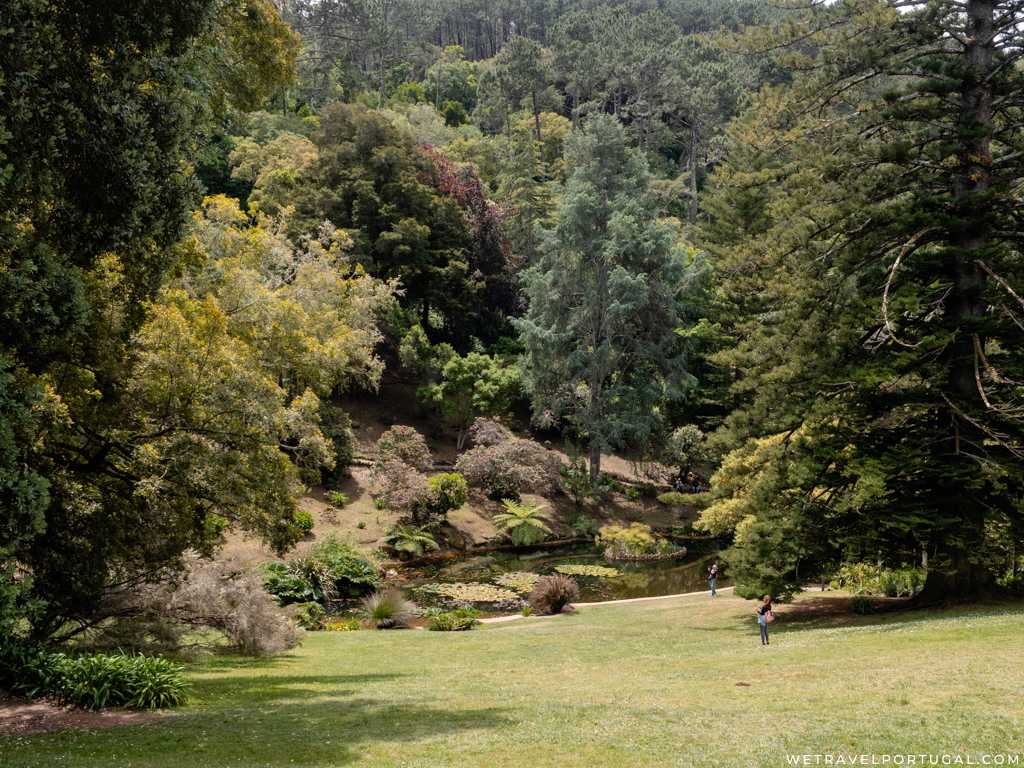
Monserrate Park
One of our favourite parts of visiting Monserrate was exploring the grounds of the property known as The Park of Monserrate. The park is cut by a twisting cobbled path that takes you through different gardens, ornamental lakes, and giant pine trees. You can either do a full tour of the property following the recommended path or take a short cut to the palace if you don’t have much time. We do recommend taking the time to take in the carefully curated gardens with hand picked species from all over the world. Last time we visited it took us only one hour to slowly explore the grounds.
The Highlights of Monserrate Park
If you are following the recommended path, the first focal point is the chapel or the ruins of it. This is not a natural ruin, but one deliberately created by Francis Cook during the 19th century. Who had the roof and some of the interior walls removed. The Australian Banyan trees embedded in the construction make this ornamental ruin look even more impressive.
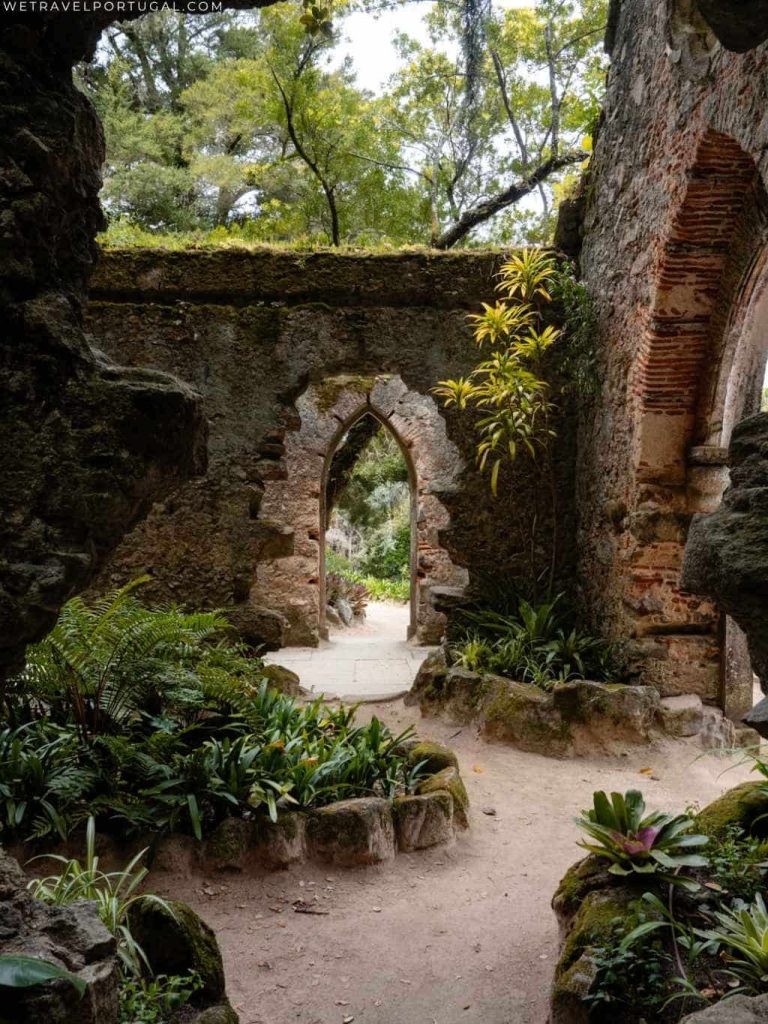
Another highlight of The Park of Monserrate are the different gardens arranged like in a botanical garden. So, you have a Japanese Garden, with bamboos and camellias, the Mexican Garden featuring palms, agaves, and other plants from warm climates. Similarly to Pena Palace, there’s also a Fern Garden, with species brought from Australia and New Zealand. Finally, there’s the Rose Garden, with estimated 200 species of roses. The garden was fully restored and inaugurated in 2011 by the Prince of Wales himself. As well as the themed gardens, there are species from almost every continent scattered across the 33 hectares of the park. If you followed the recommended path, the Rose Garden was your final stop before arriving at the palace.
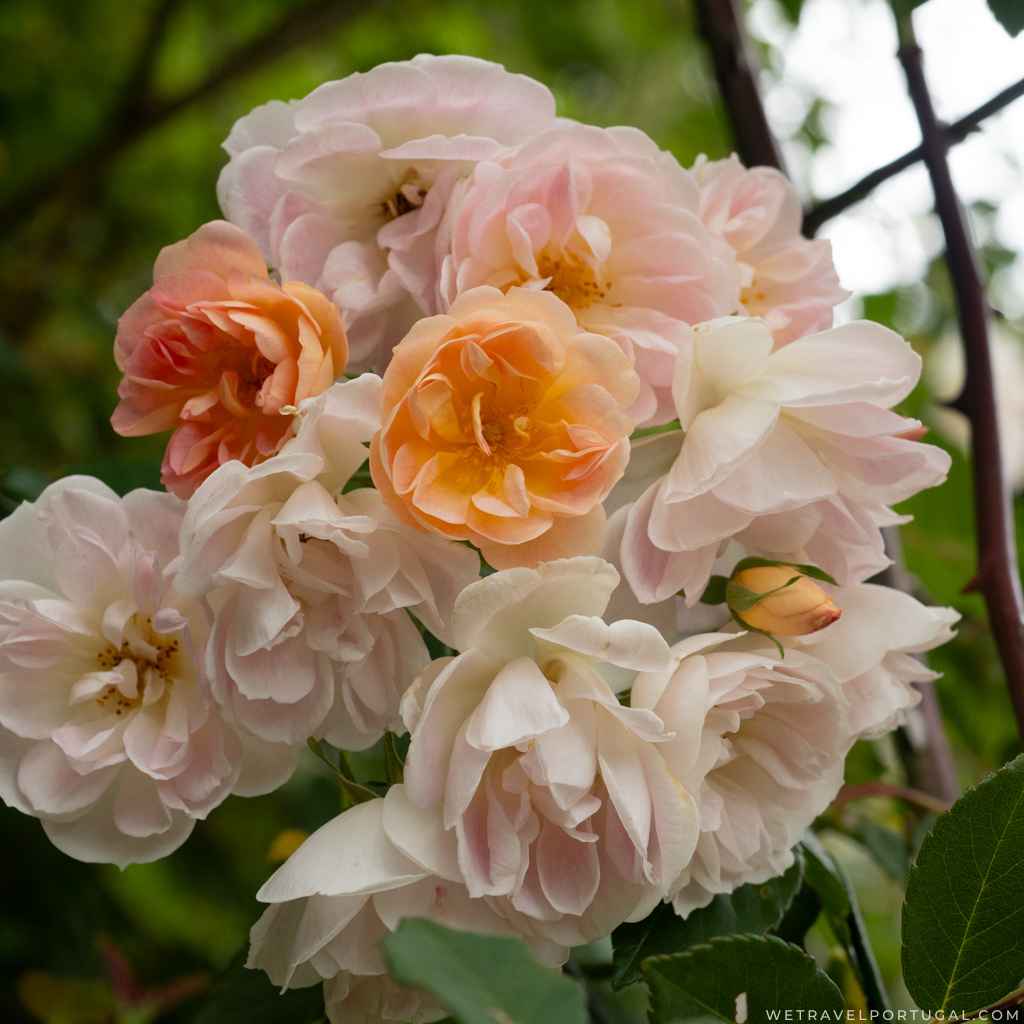
The Palace of Monserrate
The Palace of Monserrate sits at the top of a grass hill which extends from the edge of the ornamental lakes all the way up to the palace. This lush lawn was the first ever lawn planted in Portugal, and you can immediately see how it was inspired by English landscape gardens.
The garden and its paths were designed in a way you can always spot the palace from distance, so at this point you are already acquainted with the palace’s silhouette. A rectangle building with two almost identical towers with terracotta tile roofs at both ends and a large square turret at the centre. The stone walls of the building contrast with its coral Gothic inspired windows and carved stonework. It’s a beautiful façade and we recommend taking the time to take in all its intricacies.

Depending on the path you followed, you might arrive either at the southeastern side of the palace or at the southwestern entrance. The southeastern side is where the main entrance of the palace is located. The entrance hall has a small porch featuring more Gothic arches sustained by columns adorned with natural motifs.
Across from the entrance hall you can see the Triton Fountain too. However, most visitors arrive at the southwestern entrance hall. This entrance is known as the Garden Entrance, and it features a large arcade also decorated with natural motifs. This entrance allows direct access to the gardens, and a slightly separated access to the stairwell, connecting also the garden to the social rooms.
The Indian Arch
Before we dive into the impressive interior of Monserrate Palace, there’s one more feature that’s worth a mention. That is the Indian Arch located at the main entrance pathway. Acquired in India by Francis Cook from Charles Canning, the arch was one of the spoils of the Indian Rebellion of 1857. The path leading to the arch is called the scented path. It’s surrounded by pergolas with wisteria and jasmine that when in bloom release their floral scent.
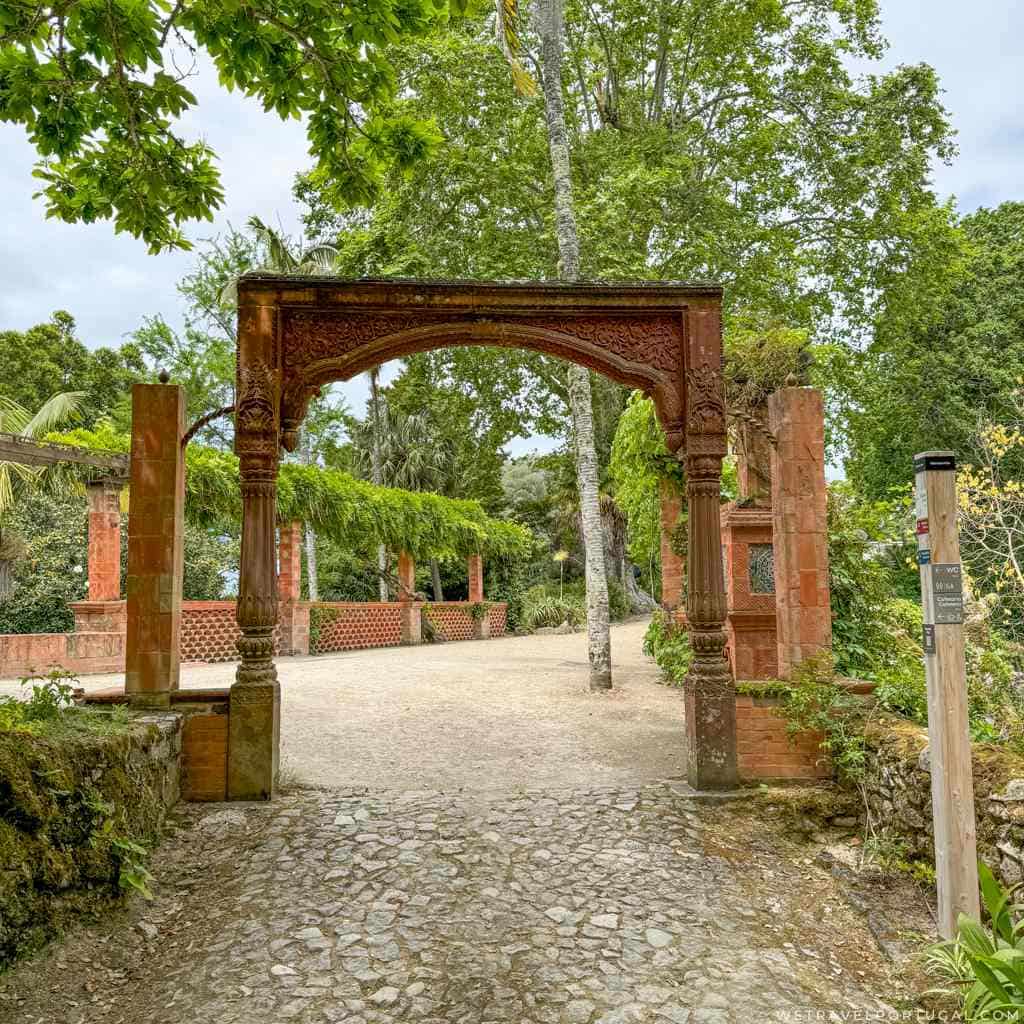
The Interior of Monserrate Palace
When you enter the palace via the side garden entrance, the first thing that catches the eye is the octagonal hall filled with the gentle splashing of a water fountain placed in the middle. Similarly to the exterior of the palace, this centre hall is adorned with overlapping arches and plaster carvings with the same foliage motifs that you can see all over the palace. Looking up you will see the gallery of bedrooms which overlooks the fountain. The hall is surmounted by an octagonal cupula lined with a sheer reddish pink fabric which lets through some sunlight. The octagonal shape of the hall was kept from the previous palace. Its inspiration came from the Founder’s Chapel in Batalha’s Monastery.

The centre hall is the point of convergence of two corridors that will lead to the towers. Both corridors are almost identical, featuring a pink marble colonnade with more multifoil arches adorned with Moorish patterns. The left corridor will take you to the drawing room, the billiards room, and at the end, the beautiful music room. The rooms on the right corridor are equally impressive. They are the library, which served as Cook’s office, the dinning room, and the main entrance’s hall. At the end of the corridor there’s also a set of stairs leading to the kitchen. Although only partially open to visitor, the grand kitchen features two separate areas for the preparation of hot and cold dishes respectively.

Finally, there’s the second floor. To access it we need to go back to the side entrance and follow up the beautiful marble staircase. Before going up make sure to take a moment to admire the baluster which is adorned with a foliage pattern matching the ceiling. On the top floor there is the bedroom gallery with the former bedrooms. Nowadays they are used as a sort of interpretation area, in one of them you can watch an interview with Richard Kingsbury recounting his memories of the life in the palace.
One thing we love about Monserrate Palace is how quiet it is in comparison to other monuments in Sintra. That means you can visit each one of its unique rooms at your own pace.

How Long Should You Spend at Monserrate Palace and Park?
Now the question we are often asked, how much time should you allocate for a visit to Monserrate Palace and Park?
Monserrate Palace is much smaller than its Pena counterpart. That means, a tour to both the gardens and the palace itself can be completed in as short as 1 hour. That said, we recommend setting aside least 2 hours to fully explore the palace and gardens. If you enjoy walking, exploring, and if you are a plant lover, the gardens of Monserrate are incredible. Add to that a break at the park’s coffee shop and it can quickly add up to 3 hours if you’re taking your time to explore every corner.

Guided Tours and Experiences in Sintra
If you don’t feel like putting too much effort into organizing your visit to Monserrate Palace and to Sintra, then a great option is to take a guided tour. The options are endless, from tuk tuks to even large coach trips. Although potentially expensive, they do provide a certain degree of flexibility and the comfort of not having to do the planning yourself. Here’s some of the best tours and activities you can book!
Should You Visit the Park and Palace of Monserrate?
The Park and Palace of Monserrate is one the prettiest palaces we visited in Portugal so far. It is not the most popular monument in Sintra, and perhaps that’s what makes it so special.
It’s less busy than most of the attractions in Sintra, so it’s perfect for those who want to avoid big queues and crowds. It’s simply a magical place, with lush gardens, exotic plants, and art pieces personally curated by its visionary. It makes for the perfect day trip from Lisbon or Cascais, and since it can be visited in 2 hours it can be combined with a stroll around Sintra’s historic centre and why not another one of Sintra’s palaces?

